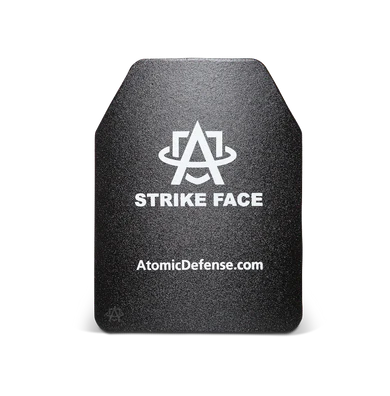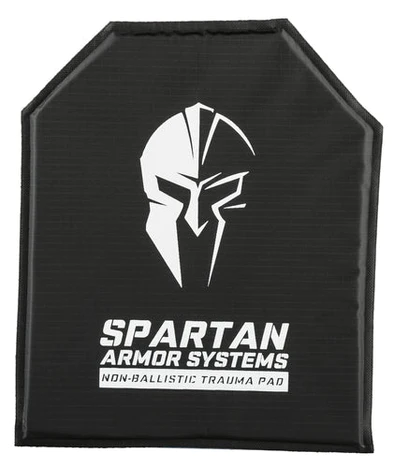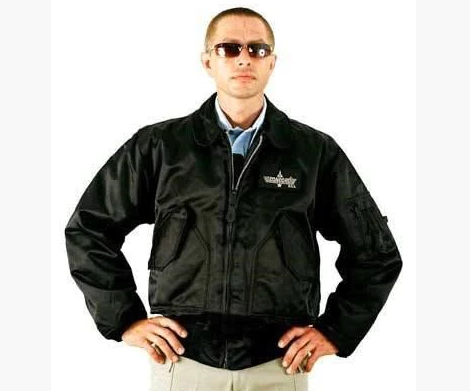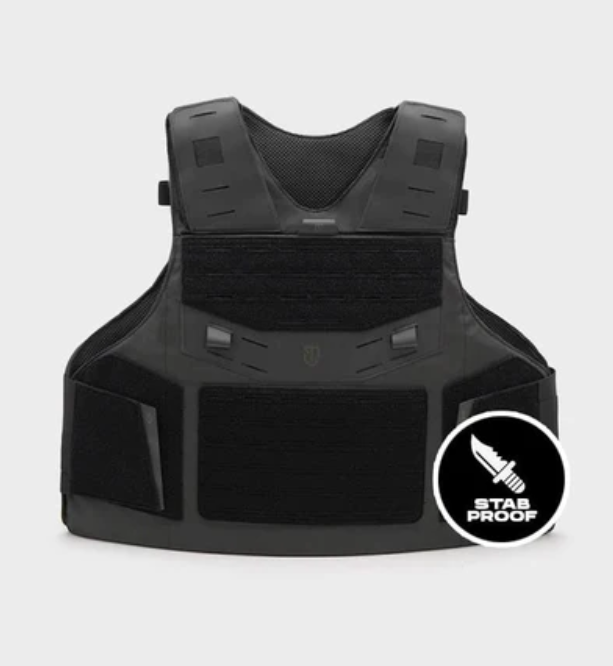2025 Guide to the Best Concealable Body Armor
Ready to armor up without drawing attention? Whether you're a law enforcement officer, an emergency medical services professional, a security guard, or simply someone who prioritizes personal safety, concealable body armor is your invaluable ally. In a world where threats can emerge unexpectedly, understanding concealable body armor is your first line of defense.
Selecting the best concealed protection may seem like a daunting mission given the wide range of options available. But fear not! Here at Bulletproof Zone, we've got you covered.

We'll be covering the basics of concealable armor in this guide, including what makes up covert body armor, who can wear it, and how it differs from overt body armor. We'll also share insider tips on what features to scout for when shopping for armor, and showcase our handpicked selection of the best, under-the-radar body armor options available now.
Table of Contents
- What is Concealable Body Armor?
- What is Concealable Body Armor Made of?
- What's the Difference between Concealable Vests and Overt Body Armor?
- How to Choose Concealable Body Armor?
- Who Needs Concealable Bulletproof Vests?
- Who Makes Concealable Body Armor?
- Which Concealable Body Armor should you Buy?
WHAT IS CONCEALABLE BODY ARMOR?
Well, the name pretty much gives it away—it's body armor that flies under the radar, designed to be invisible to everyone except perhaps the most eagle-eyed observers. This stealth feature gives you a strategic edge, keeping you prepared without tipping off potential threats or worrying those around you.
Sporting this type of armor means you blend in seamlessly, avoiding the "bullseye effect" that comes with more conspicuous protection. After all, if an aggressor spots concealed armor, they're more likely to aim for exposed areas. Plus, keeping your armor undercover avoids causing any unnecessary concern among law-abiding citizens.
One of the coolest aspects of concealable body armor is its versatility. You can wear it under your everyday clothes or a uniform, allowing you to adapt your look to whatever the day demands without sacrificing safety or attracting attention.
Primarily, this kind of armor is a go-to for individuals who might face danger or need to keep a low profile for their work. Think protective vests and carriers that offer protection without the bulk, available in hoodies and even three-piece suits.
Subtlety is key when it comes to concealable body armor design. External fasteners? Forget about them—they're a dead giveaway. For this reason, these armors come in subtle, light-colored designs that blend in with your outfit rather than drawing attention to themselves.
WHAT IS CONCEALABLE BODY ARMOR MADE OF?
At its core, this stealthy protector is all about the blend of a carrier garment with some serious built-in protective material.
The outer shell, or carrier, often uses familiar fabrics like cotton and nylon—nothing too out of the ordinary there. However, since this type of armor is designed to hug close to your skin, it's lined with fabrics that have a special mission: to wick away sweat and promote airflow. This keeps you cool, dry, and comfortable, even when the heat is on.
These smart materials work hard to ensure that, despite the added layer of protection, you won't feel like you're in a sauna all day. It's all about maintaining that undercover edge while ensuring you stay alert and ready for anything.

The main core of the concealable body armor carrier's defensive qualities is tucked away within. It's a layer of protection strategically placed to shield crucial areas of the torso, such as the liver, kidneys, heart, and lungs, from potentially fatal damage.
Typically, this armor provides a shield for both the front and back of the wearer. Customization according to personal needs or mission-specific details is possible, though. To increase their safety margin, some people might choose to add more side protection, while others would decide to concentrate only on frontal defense for a variety of reasons.
Soft armor is the key ingredient in this protective gear. It is either slid into detachable panels that facilitate flexibility and upkeep, or it is sewed right into the carrier for a permanent shield.
Normally, the soft armor inserts are composed of either Ultra-High Molecular Weight Polyethylene [UHMWPE] (such as Honeywell Spectra® or DSM DyneemaTM) or a para-aramid textile (for instance, DuPont Kevlar® or Teijin Twaron®).
This material exhibits remarkable strength, from 5 up to 20 times that of steel, and reflects military accuracy. Depending on the specific concealable body armor, this kind of armor can both deflect an incoming bullet and stop a knife.
The fabric's elaborate design holds the secret. It traps the threat—knife or the bullet gets caught up in the fabric mesh—inside its multi-layered net, in addition to rejecting it.
When it comes to bullet protection, the material absorbs the force of the bullet's impact in addition to intercepting it. It disperses energy across the entire armor and transforms the bullet point into a less menacing disk-like form.
Some types of hidden body armor go one step farther. Extra pockets, positioned to hold additional Trauma Pads, are positioned strategically at the front, occasionally in the back and sides. They are the extra line of defense that keeps injuries at bay.
WHAT'S THE DIFFERENCE BETWEEN CONCEALABLE VESTS & OVERT BODY ARMOR?
Unlike its sneaky counterpart, overt body armor boldly goes over your clothing.
In the fashion world of defense, it's the one that stands out – sometimes literally. It can rock a hi-viz look, making a statement as a visible deterrent, or go for a distinctly colored (camo, for example) to enable you to blend seamlessly.
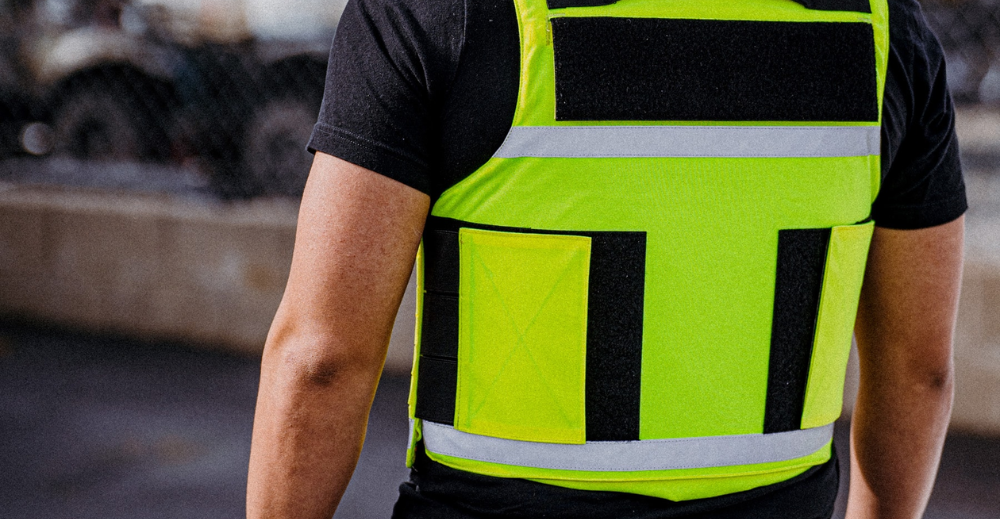
Overt body armor is the heavy-duty player, usually packing a punch at NIJ Level III or IV, ready to handle rifle rounds like a seasoned pro.
Also referred to as "tactical body armor," it's the kind that sports an external carrier vest, armed with hard armor metal or ceramic composite plates.
But here's the twist—while overt armor brings the big guns in protection, it comes with a trade-off. It's bulkier and more rigid than its sleek, concealable sibling. Overt armor is your go-to for those short missions.
In high-stakes situations where the chances of making a shot are very high, this is the preferred choice.
We're talking about marines, S.W.A.T. teams, soldiers, and the elite ops unit. Foreign news correspondents covering the front lines of conflict also rely on this armor to keep them safe in conflict-torn areas, so it's not just military personnel who are clad in it.
Overt body armor is equipped with some serious functionality. Ever heard of Modular Lightweight Load-Carrying Equipment [MOLLE]? This pack is configured to manage more than just the essentials thanks to Pouch Attachment Ladder System (PALS) webbing. Extra tools and supplies can be fastened.

HOW TO CHOOSE CONCEALABLE BODY ARMOR
Here's the lowdown on the three crucial factors to keep in mind when choosing your bulletproof vest:
1. PROTECTION LEVEL
First and foremost, determine the level of protection you need by assessing what weapons you might come across:
HANDGUNS
The United States National Institute of Justice issues a report card on personal body armor based on the most recent NIJ Standard 0101.06. Here's your quick reference guide to increasing your level of handgun safety:
- Level IIA – it's a bit outdated, but it still protects against a.9mm Full Metal Jacket Round Nose [FMJ RN].
- Level II – this level raises the stakes because it can stop any handgun round, even the powerful.357 Magnum Jacketed Soft Point [JSP].
- Level IIIA – think of this as the VIP of soft armor—excellent and set for action. It is capable of withstanding at least six rounds from a Semi-Jacketed Hollow Point (SJHP).44 Magnum.
It's advisable not to opt for concealable body armor with a higher or lower NIJ rating than you need.
Going higher might sound like you're gearing up for the apocalypse, but in reality, it means carrying around unnecessary weight. Imagine being stuck with extra bulk when you could be light on your feet.
On the flip side, going too low is like heading into a firefight armed with a water pistol. It might look sleek and low-profile, but it won't stop that one bullet that could change everything.
KNIVES/SPIKES
The United States National Institute of Justice awards it a stabbing-resistant report card based on the most recent NIJ-STD 0115.00. Here's how you get more protection against cuts, slashes, and stabs:
- Level 1 - around 24 joules of force and offers good protection against penetration beyond a few millimeters from most normal knives and spikes (like a syringe needle or an ice pick)
- Level 2 – around 33 joules of force
- Level 3 – around 43 joules of force
MULTI-THREAT
This is specifically about combination armor, which is made up of separate layers of material and provides equal protection against pistols and edged weapons like spikes.
Now, don't get too hung up on formal designations when you hear about IIIA+. It does not necessarily indicate "multi-threat," nor does it represent an NIJ-endorsed protection level.
Body armor manufacturers will occasionally display the IIIA+ designation to show that their products are capable of stopping bullets at Level IIIA and above. This armor provides additional protection against shotgun shells and the potent Five-seveN [FN] 5.7 semi-automatic pistol ammo.
STUN GUN/TASER
Let's tackle a crucial point: your typical concealable body armor won't shield you from the jolt of a Conducted Energy Weapon (CEW), which includes stun guns and tasers.
2. FIT
It's mission-critical to get the fit of concealable body armor perfect. It should be snug and secure against the body. If it's too small or large, not only will comfort suffer, but so will your coverage and protectability.
It is all about the precise measurements. While most covert body armor comes in a range of alpha sizes, some are made specifically for you if you prefer a more customized fit.
Weight is also important. lighter armor? That's the benchmark. It not only means you won't feel heavy wearing it for extended periods of time, but it also doesn't mess with your movement and agility.
What you throw over the top matters since concealable body armor also functions as innerwear. A tight t-shirt? Not the wisest choice. Wear something loose if you want to conceal your covert defense.
3. COST
You see, the cost of these concealed body armor corresponds to the amount of work that went into creating them both extremely effective and discreet.
What drives the cost? It combines wearability and protection level. While higher NIJ Levels and greater comfort and wearability can contribute to a higher price, it's important to note that there's a wide range of options available at different price points.
Prices for concealable vests of good quality vary greatly these days. You might have to pay anything from a little over US$100 to a hefty US$2000 or more.
While you must monitor your spending, avoid the rookie mistake of prioritizing cost above of protection level and your own needs.
Keep in mind that this is an investment that might just save your life.
WHO NEEDS CONCEALABLE BULLETPROOF VESTS?
Bulletproof armor is a shield that is accepted by a wide spectrum of people from many walks of life, not just the fearless men and women in uniform.
In reality, covert body armor is something that people from all walks of life may and do utilize on a regular basis. Here are a few instances:
-
those with immediate access to cash/valuables such as bank tellers, convenience and jewelry store clerks, ATM repairmen, mail couriers, and gas station attendants
-
those employed in law and order such as federal patrol and undercover officers, correctional staff, coastguards, bail bond agents, bounty hunters, and private investigators
-
those who engage in close-quarter security detail such as door supervisors and bodyguards
-
high-profile individuals such as government officials, visiting dignitaries, judges, business executives, and of course the president and his secret service entourage
-
those readying for some kind of national disaster such as urban preppers
-
concerned citizens who live or travel through a sketchy neighborhood, or perhaps live off grid where response time from emergency services is too long
WHO MAKES CONCEALABLE BODY ARMOR?
The market is overrun with companies, a plethora of manufacturers, and an avalanche of products when it comes to concealable body armor. To cut right to the chase, though, not everyone is made of the same material.
We are in a league of our own here at Bulletproof Zone, we only supply covert vests, concealed carriers, and bullet/stab-resistant clothing from the most reputable body armor manufacturers on the planet. So let's get right to it...
WHICH CONCEALABLE BODY ARMOR SHOULD YOU BUY?
That depends on your budget and why you need it. By all means, scour the Bulletproof Zone concealable body armor collection. Alternatively, we’ve rounded up what we feel are the ultimate covert body armor products in 2024:
SUITABLE FOR LAW ENFORCEMENT OFFICERS (≤ $300)
Spartan Armor Systems DL Concealment Plate Carrier & Flex Fused Core Soft Body Armor
-
Our best selling option offers top-notch concealability without compromising on protection.
-
It's a favorite among law enforcement officers for its low-profile design and integrated soft Mag Pouches, and 2 10”x12” NIJ Level IIIA ballistic panels
SUITABLE FOR LAW ENFORCEMENT OFFICERS ($301 -$700)
Protection Group Denmark Ultra Stab/Spike Proof & Bulletproof Vest
-
Its ultra-thin profile and thermo-technology are based on Outlast Phase Change Materials [PCM] to adjust its temperature to the wearer's make it a practical choice for professionals on duty.
-
Designed with the needs of law enforcement officers in mind, this vest combines advanced technology with reliable protection with its soft armor composed of unidirectional aramid fibers rated at NIJ Level IIIA and Level 1 anti-stab/spike protection up to 36 joules.
-
ESAPI hard armor plates an add-on for front and back
SUITABLE FOR LAW ENFORCEMENT OFFICERS ($701 - $1000)
Israel Catalog Level IIIA SP1 Concealed Stab Proof and Bulletproof Vest
-
Law enforcement officers can trust this vest for its adjustable fit and high-quality materials.
-
Adjustable panels in a cotton or polyester cover, allowing you to tailor the fit to your body.
-
High tenacity Aramid fibres coated by a polycarbonate layer with its Level IIIA SP1 - Israeli Technology.
SUITABLE FOR SECURITY PERSONNEL (≤ $300)
BulletSafe Vital Protection3 [VP3] Bulletproof Vest
-
Its wrap-around ballistic panels ensure comprehensive coverage, making it an ideal choice for security professionals.
-
Undoubtedly the best-value concealable body armor available.
-
This vest offers a reliable NIJ Level IIIA certified front and rear ballistic panels, and except for XS, can accommodate Level IV hard armor plates through its extra plate pockets to protect against rifle and machine gun rounds at an affordable price.
SUITABLE FOR SECURITY PERSONNEL ($301 - $700)
Safeguard Armor Ghost Concealed Bulletproof Vest Body Armor
-
Designed for security personnel, this vest offers customizable ballistic protection and a comfortable fit.
-
Its 100% Coolmax carrier ensures breathability during extended wear, making it suitable for long hours on duty.
-
This vest has an adjustable waist and shoulder straps to provide the perfect fit.
-
Customizable with NIJ Level II or IIIA ballistic protection, Level 1 or 2 edged blade protection, as well as Level 1 or 2 spike protection
SUITABLE FOR SECURITY PERSONNEL ($701 - $1000)
PPSS Group Covert Stab Resistant Body Armor
-
This vest is specifically designed to meet the needs of security personnel facing a range of threats.
-
Ergonomically-cast carrier with 2 Universal Radio Docks fitted as standard
-
Detachable soft armor panels protect against knife attacks and stabbings plus spikes, improvised weapons, and blunt force trauma
SUITABLE FOR EMERGENCY MEDICAL SERVICES (≤ $300)
Legacy Safety & Security EMS Vest
-
The vest's adjustable design ensures a comfortable fit for EMS personnel, while its ballistic panels provide reliable defense against potential threats.
-
A single-size vest featuring three side adjusters for a precise fit, as well as upper and lower reflective stripes.
-
Front-only NIJ Level IIIA soft armor, but connecting front and back pockets can each carry Legacy’s own Dual Threat armor panel for added ballistic and stab resistance
SUITABLE FOR EMERGENCY MEDICAL SERVICES ($301 - $700)
AR500 AR Concealment Plate Carrier & Soft Armor
-
This vest offers comfort and versatility for emergency medical services personnel.
-
Comfort and concealability are enhanced by its 4-way stretch capabilities, which adapts to the wearer's movements.
-
Comes in medium (10”x12” plates) or large (11”x14” plates) sizes, and can be paired with IIIA Rimelig, Slim, or Hybrid soft body armor, plus trauma pads
SUITABLE FOR CIVILIANS (≤ $300)
Armor Express T-shirt Armor Carrier
-
Designed with civilians in mind, this vest offers discreet protection in everyday situations.
-
Ranking among the top ten American producers of body armor.
-
Created out of polyester and spandex with antimicrobial properties.
-
Front of shirt contains 5”×8” plate pocket for additional soft armor inserts
SUITABLE FOR CIVILIANS ($301 - $700)
Israel Catalog Concealed Civilian Bullet Proof Vest VIP Model
-
Civilians can trust this vest for its reliable protection and customizable fit.
-
The shoulder and waist straps can be resized up to three sizes larger and down one size from the selected carrier size.
-
Front and rear ballistic protection rated at NIJ Level IIIA.
SUITABLE FOR CIVILIANS ($701 - $1500)
Israel Catalog Bulletproof Flight Jacket
-
This civilian-friendly jacket offers both style and protection, making it a practical choice for everyday wear.
-
Classic style coat available in full wrap or normal coverage, modeled after the original MA-1 bomber jacket.
-
It is constructed to the professional standards you would expect for a jacket of this grade, and the Israeli security forces trust and employ this flying jacket.
SUITABLE FOR EVERYDAY WEAR (≤ $300)
CompassArmor Ultra Thin Bulletproof Singlet
-
Perfect for everyday wear, this singlet offers discreet protection without sacrificing comfort.
-
Close-fitting design, shock-absorbing, versatile, and incredibly light.
-
NIJ Level IIIA Kevlar panels front and back
SUITABLE FOR EVERYDAY WEAR ($301 - $700)
UARM Covert Armored T-shirt [CAT]
-
This armored t-shirt offers everyday protection with a focus on comfort and versatility.
-
Its positively buoyant, weight-balanced, Coolmax lining and covert design make it suitable for daily wear, providing peace of mind without sacrificing style.
-
Armor types IIA, II, or IIIA UHMWPE panels front and back with covert dual side zippers for easy armor installation and fast dressing/undressing
SUITABLE FOR EVERYDAY WEAR ($701 - $1000)
MC Armor Perfect Tank Top with Side Protection
-
Designed for everyday wear, this tank top offers comprehensive protection and comfort.
-
2016 Reddot Design Award winner, available in both his and hers
-
NIJ Level IIIA certified front, back, and sides
HONORABLE MENTION
For those requiring protection against rifle and machine gun rounds, this vest offers top-tier defense. The innovative design and reliable performance of Ace Link Armor Skeletac Hybrid Bullet and Stab Proof Vest make it a standout option in the market.
These recommendations are tailored to meet the specific needs and budgets of various users, ensuring that everyone can find the right concealable body armor for their requirements.
TAKEAWAY
Bulletproof Zone has you covered when you require covert, lightweight, and cozy ballistic protection. For every need and price range, we provide concealable armor, including bulletproof vests.
In the midst of these financially tactical times, we've got your six—no pun intended. To ease the hit on your wallet, we offer several financing options for your concealable body armor. It's our way of ensuring your protection doesn't break the bank. Your safety, your terms.
The good news is that we will ship your item for free anywhere in the continental United States when you lock in an order with Bulletproof Zone for more than $100. To top it off, you can trust that our price match guarantee will protect you.
Tell us why you are interested in a concealable bulletproof vest. Let us know below!





